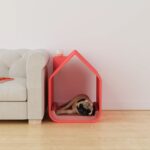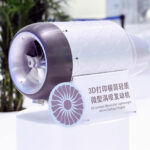Medical 3D printing has always taken cues from biology to develop new functional parts and prosthetics. With the advanced engineering capabilities the technology allows, researchers have developed “externally worn and implantable tissue-support devices, such as ankle or knee braces, and hernia repair mesh“. These 3D printed meshes and supports mimic tissue mechanics and help support patients more accurately.
The research, published in Advanced Functional Materials, opens up complex designs for muscle-tissue support. These flexible designs match the body with accuracy and support soft tissues using thermoplastics with (optional) continuous fiber reinforcement. The researchers have composed a series of designs taking into account the complexities of human muscle movement.
The 3D printed medical supports also take advantage of flexible materials. To this end, the researchers created the mesh using thermoplastic polyurethane. They printed TPU in a wavy pattern, aping the structure of collagen found in ligaments, tendons and muscles. Similarly, when it came to the ankles, they developed long strips of mesh and stuck them in the ankle exterior.
“3-D-printed clothing and devices tend to be very bulky,” says MIT post-doc Sebastian Pattinson says. “We were trying to think of how we can make 3-D-printed constructs more flexible and comfortable, like textiles and fabrics.”
Developing 3D Printed Medical Implements
The researchers also employed the use of a special robot to measure the force exerted by the various muscles. This allowed them to measure its movement and account for force in 12 different directions the body parts could move in. To properly mimic the functions of these parts and print them to be in the precise specifications of each patient, they engineered the tensile mesh mechanics to match the nonlinear response of muscle.
They found that the mesh only increased ankle stiffness during inversion movement, the most common cause of ankle sprains. A stiffer ankle during inversion could help reduce the risk of sprains. To make the mesh more free in its motion, the researchers decreased the proximity of the layers. While tight layer patterns make for solid objects, they can be rigid. Thus, the 3D printed mesh uses layer deposition at a slower rate to allow the lower layer to cool properly. This level of cooling allows the distance to create even more flexibility within the meshes. As a result, they were able to mimic the texture of textiles.
Another important characteristic of the mesh is its auxetic structure. This means that it become wider when the user pulls on them, which is useful for obvious reasons. They were able to print meshes where the middle consists of structures that behaved rather than contracting like a normal mesh. This property supports the highly curved surfaces of the body and the knee in particular.
Featured image courtesy of











